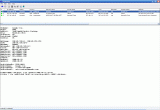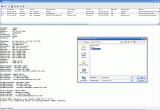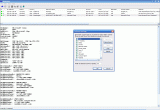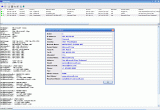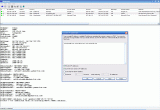Everybody used at least a couple of times the old phone machine; I mean the classic one, the one in your apartment or the public ones. Each of these phone machines has its unique "name" which you can refer to. The NUMBER. Every phone line in this world has its own number. Same with the mobile phones.
Following the above lines, I must tell you (well, some of you should already know that) that every computer which connects to the internet has its own public IP address. Or should have one. And just like the phone lines which can be set up to transfer the signal (through a specific device) of a single connection to other machines (interior lines) the same way a public IP address can be configured (through a software/hardware solution) to transfer the signal to other "interiors" - in this case other class IP addresses.
This way, if someone knows your IP, he can perform some basic network tasks on you, like pinging or trace routing. The software market nowadays offers a large amount of tools and suites you can use to test a network connection. Of course, if you were wondering, you can also perform tests and retrieve public information about any website/domain listed on the web. Want to see what's behind www.mynameisJohnDoe.com? Just pick up this little tool I'm just going to review and you'll be pleased to see what it does.
The midget's name is IPNetInfo (only 48KB, in a zip file), comes from Nir Sofer and will surely satisfy your web curiosities. With this small size and being developed as freeware, IPNetInfo is a must have tool even for the not so advanced PC users.
IPNetInfo can be downloaded as a zip file, which contains the standalone executable, a help file and the readme. Once opened, it will deploy itself in a two-windowed like interface with a screen above. It's the "Choose IP Addresses" screen, which lets you insert the IPs or domains you want to retrieve data for.
This tool has a simple menu structure: 4 ones with to the point purposes - File, Edit, View and Help.
File starts with Choose IP Addresses, the one that appears at the program's launch. This option has a useful shortcut - F9. Just press it and the window will show itself. Here you'll type or paste the IPs/websites and then click OK. The result will be shown in those two panes of the program. The upper one, column like, informs you about the main data of an IP (starting with the IP itself, country, network and owner name, the IP range and contact data). The lower one displays the contact data from the RIPE whois server (RIPE stands for R?seaux IP Europ?ens - European IP Networks). Basically the same, this one also shows the registerer's name.
In the file menu, you can also stop the actual data retrieving and you can save (.txt files) your selected items or whois records. The properties and the exit are the last two options. ALT-ENTER is the shortcut you can use for the property feature of the listed IPs.
In the edit menu, you can search through the test results (an IP or a part of text, for example) and copy an entire selected line to other application of your choice (text editor). You can also select/deselect all objects/text in the upper/lower window of the program. This is quite useful if you want to copy all the results.
The first selection you can make in the next menu (Selection one) is "Show Grid Lines". It simply does this: shows some lines between the fields of the upper pane, making a box-like view. Here IPNetInfo has an HTML Report feature (both horizontal and vertical) which automatically deploys in your default web browser. All the data in a two-columned table (vertical) or rowed one (horizontal). Very useful for later printing. In the Selection menu you can also customize the columns' look (autosize them or choose which remains and which not).
All these features can be reached by right clicking the result on the pane (report, save, column managing and properties). The last menu, Help, contains a little "about" for IPNetInfo.
The good
A nice option that I consider somewhat useful: If you want to know more about a mail header, just copy paste all the info in the program and will automatically retrieve IPs and give you the info.
The bad
Maybe a more fashion-like interface should be implemented. It does what it does, but the eye is the first who tests it. And I don't like at all the horizontal scrolling (who does?) - I'm using 1280x1024 right now and I had to scroll for some 30-35 % of the line to see all the info.
The truth
IPNetInfo takes my "free and useful" credit - small and robust, it works on low system resources and does at its best its job. Nice and smooth!
Here are some snapshots of the application in action:
 14 DAY TRIAL //
14 DAY TRIAL // 